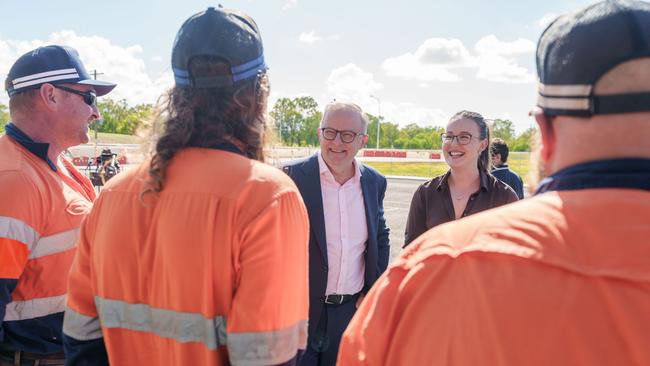Anthony Albanese announces millions more for housing as building approvals stall in November
After Anthony Albanese poured millions more into bolstering housing supply in Queensland’s far north, new data signalled that the recent growth in new dwellings remains patchy.

Anthony Albanese has poured millions more into bolstering housing supply in Queensland’s far north, as new building approvals data shows the recent growth in new stock remains patchy.
Announcing an additional $25m in federal funding via Labor’s Housing package, the Prime Minister on Tuesday branded the commitment an “investment in Australia’s future”.
“We’re investing in housing infrastructure, but we’re also investing in local communities as well, right throughout regional Australia in particular,” he told reporters on a visit to Cairns.
His comments come as the Australian Bureau of Statistics reported the number of approvals – a leading indicator of the housing pipeline – fell by 3.6 per cent in November, with 14,998 residences signed off for construction.
Economists attributed the decline to an adjustment following a particularly strong reading in October when approvals jumped 5.2 per cent after a large number of apartments received permits in Melbourne and Sydney.
“While there still looks to be an underlying uptrend, it is neither strong nor convincing,” said Matthew Hassan, Westpac’s head of macro-forecasting.
While data for housing permits can be volatile from month to month, and later subject to large revisions, approvals climbed through 2024 to be 3.2 per cent higher in the year to November, slightly above the rate of population growth, with 169,138 permits issued.
Despite the recent upward trend, approvals remain well short of the number required to meet Labor’s target to build 1.2 million “well-located” homes in the five years to mid-2029.
To achieve that target, an average of 240,000 new homes would need to be built each year. However, the Coalition, property industry groups and the government’s own National Housing Supply and Affordability Council expect the goal will be missed.
Commonwealth Bank economist Harry Ottley said recent growth in approvals had been encouraging, albeit slow, with expected interest rate cuts in the months ahead likely to lend some support to a further increase in building activity.
“If the cash rate is lowered this year, building approvals are likely to keep improving,” Mr Ottley said. “We expect a shallow easing cycle, however, which means hitting government targets in the near term remains unlikely assuming no other major policy changes.”
The decline in dwelling approvals in November was across all residential building types, the ABS said, with the reduction primarily driven by private apartments, townhouses and other multi-unit dwellings which slumped 10.8 per cent across the month.
Private detached housing approvals were similarly lower, down 1.7 per cent.
Queensland was the only state to experience growth in private-sector house approvals in November, rising 4.3 per cent.
AMP economist My Bui warned the housing market continued to face significant undersupply challenges, estimating a shortfall of at least 200,000.
“We continue to see the housing shortfall continuing throughout this financial year, which will put a floor on house price depreciation in the first few months 2025 before the RBA starts cutting,” she said.
The housing shortage has pushed property values to record levels in recent years with prices now unaffordable for many.
Despite easing slightly in December, the median capital city dwelling now costs $896,000, according to property research group CoreLogic.
A new survey of 320 C-suite executives and board directors conducted by KPMG found affordability and supply of housing was the most prominent social issue affecting business operations.
KPMG chief economist Brendan Rynne said respondents recognised that the current shortage demanded a “fundamental reassessment” of the housing system.
“This will involve all levels of government, the development sector, the construction industry and the wider community and an understanding of the needs of all stakeholders involved,” he said.




To join the conversation, please log in. Don't have an account? Register
Join the conversation, you are commenting as Logout